|
Books Should Be Free Loyal Books Free Public Domain Audiobooks & eBook Downloads |
|
|
Books Should Be Free Loyal Books Free Public Domain Audiobooks & eBook Downloads |
|
Fiction |
|---|
|
Book type:
Sort by:
View by:
|
By: Various | |
|---|---|
 Black Cat Vol. 02 No. 06 March 1897
Black Cat Vol. 02 No. 06 March 1897
The Black Cat was a monthly literary magazine, publishing original short stories, often about uncanny or fantastical topics. Many writers were largely unknown, but some famous authors also wrote original material for this magazine. This sixth issue of volume 2 presents the following five short stories: "The Stolen Melody", by Constance Fauntleroy Runcie: a ruthless pianist tries to win the music award through evil manipulation "The Bramble Gift Trust", by Zollie Luther Jones: Nannie Burns has assembled a very unusual collection of souvenirs "The Parchment Slave", by A... | |
 Black Cat Vol. 02 No. 07 April 1897
Black Cat Vol. 02 No. 07 April 1897
The Black Cat was a monthly literary magazine, publishing original short stories, often about uncanny or fantastical topics. Many writers were largely unknown, but some famous authors also wrote original material for this magazine. This seventh issue of volume 2 presents the following five short stories: "The Peacock and the Copper Moon", by Frances Aymar Mathews: a sculptor's plan to save her lover suddenly receives a dramatic twist "Westward Ho !", by J. Wesley Glover: don't launch the party before the guests arrive ! "The Captain's Gray", by Ella F... | |
 Black Cat Vol. 02 No. 08 May 1897
Black Cat Vol. 02 No. 08 May 1897
The Black Cat was a monthly literary magazine, publishing original short stories, often about uncanny or fantastical topics. Many writers were largely unknown, but some famous authors also wrote original material for this magazine. This is the eighth issue of volume 2 with the following five short stories: "The Passing of the Polly Ann", by Collins Shackelford: the survivor of a drifting ship testifies to a startling revelation "The Obsequies of Ole Miss Jug", by Jean Ross Irvine: these children know how to bury a faithful dog in style "A Modern Goliath", by J... | |
 Black Cat Vol. 02 No. 09 June 1897
Black Cat Vol. 02 No. 09 June 1897
The Black Cat was a monthly literary magazine, publishing original short stories, often about uncanny or fantastical topics. Many writers were largely unknown, but some famous authors also wrote original material for this magazine. This is the ninth issue of volume 2 with the following five short stories: "The Man-Hunt of Mendocino", by Frank Bailey Millard: no one can stop the revenge of a mother for the murder of her son "Silas Bartle's Snake-Bite Cure", by Winthrop Packard: witness young Norris' dramatic struggle to survive a deadly snake bite "Tunnel Number Six", by Eugene C... | |
 Black Cat Vol. 02 No. 10 July 1897
Black Cat Vol. 02 No. 10 July 1897
The Black Cat was a monthly literary magazine, publishing original short stories, often about uncanny or fantastical topics. Many writers were largely unknown, but some famous authors also wrote original material for this magazine. This is the tenth issue of volume 2 with the following five short stories: > For Dear Old Yale, by James Langston: a game of cards will decide the fate of these six men > The Casket of Pandora, by Margaret Dodge: a young woman is tempted to choose between her family and her career > A Romance of the Palisades, by E... | |
 Black Cat Vol. 02 No. 11 August 1897
Black Cat Vol. 02 No. 11 August 1897
The Black Cat was a monthly literary magazine, publishing original short stories, often about uncanny or fantastical topics. Many writers were largely unknown, but some famous authors also wrote original material for this magazine. The eleventh issue of volume 2 comprises the following five short stories: "Her Bare Foot", by William C. Hudson: what is the mystery behind the continued warnings about her bare foot ? "Miss Phoebe and Mr. Lorton", by Charles Sloan Reid: a long-lost letter is finally found to change the fate of two people "A No Quorum Night", by L... | |
 Black Cat Vol. 02 No. 12 September 1897
Black Cat Vol. 02 No. 12 September 1897
The Black Cat was a monthly literary magazine, publishing original short stories, often about uncanny or fantastical topics. Many writers were largely unknown, but some famous authors also wrote original material for this magazine. These are the stories in the twelfth issue of Volume 2: "Sombre", by John M. Ellicott, U. S. N.: can Anita save her beloved pet-bull and her fiancé from the deadly arena ? "The Debut of Mandana", by Alden Lyman: sometimes one has to go to great lengths to make people come on a visit "Number Seven", by Livingstone B... | |
 Black Cat Vol. 03 No. 1 October 1897
Black Cat Vol. 03 No. 1 October 1897
The Black Cat was a monthly literary magazine, publishing original short stories, often about uncanny or fantastical topics. Many writers were largely unknown, but some famous authors also wrote original material for this magazine. We're presenting the first issue of Volume 3 with the following stories: "His Millionaire Client", by Sallie Pate Steen: a clever plan is hatched to claim a convicted murderer's inheritance "The Egg that Ran Away", by Philip Verrill Mighels: a naturalist finds a supposedly new species of eggs "Love and Avarice", by Leonard Freeman Burbank: obsessive love often ends in tragedy "How the Widow Raised the Mortgage", by R... | |
 Black Cat Vol. 03 No. 2 November 1897
Black Cat Vol. 03 No. 2 November 1897
The Black Cat was a monthly literary magazine, publishing original short stories, often about uncanny or fantastical topics. Many writers were largely unknown, but some famous authors also wrote original material for this magazine. This is the second issue of Volume 3 with the following stories: "Melted Melody", by James J. McEvilly: witness an archaeologist's unusual experiment in an ice cave "Old Pruitt", by Wellington Vandiver: the explanation why Block 2 was the merriest block in gaol "The Coming and Going of a Washoe", by Philip Verrill Mighels: a little Indian boy conquers the heart of two men "A Problem of the East", by Joseph A... | |
 Christmas Miscellany 2022
Christmas Miscellany 2022
Seven stories, chapters, essays, or poetry about Christmas or around Christmas. - Summary by david wales | |
 Black Cat Vol. 01 No. 01 October 1895
Black Cat Vol. 01 No. 01 October 1895
The Black Cat was a monthly literary magazine, publishing original short stories, often about uncanny or fantastical topics. Many writers were largely unknown, but some famous authors also wrote original material for this magazine. This is the very first issue, offering the following 7 stories: "In gold time", by Roberta Littlehale: in wild-west days, when two rivals love the same woman, tragedy ensues "The unturned trump", by Barnes MacGreggor, pseudonym of H. D. Umbstaetter : to while away the... | |
 Black Cat Vol. 01 No. 02 November 1895
Black Cat Vol. 01 No. 02 November 1895
The Black Cat was a monthly literary magazine, publishing original short stories, often about uncanny or fantastical topics. Many writers were largely unknown, but some famous authors also wrote original material for this magazine. In this second issue are included the following 8 stories: "A Calaveras hold-up", by Roberta Littlehale: can love make a man mend his ways or are some relationships doomed from the start ? "From a trolley post", by Margaret Dodge: a boring bus-stop wait is interrupted... | |
 Black Cat Vol. 01 No. 03 December 1895
Black Cat Vol. 01 No. 03 December 1895
The Black Cat was a monthly literary magazine, publishing original short stories, often about uncanny or fantastical topics. Many writers were largely unknown, but some famous authors also wrote original material for this magazine. The following 6 stories are included in this third issue: "The great star ruby", by Barnes MacGreggor, pseud. of H. D. Umbstaetter : a man tells the thrilling story of the theft of a very valuable ruby "The interrupted banquet", by René Bache : at this strange dinner party, a young man is told some shocking news by the other guests "The archangel", by James Q... | |
 Black Cat Vol. 01 No. 04 January 1896
Black Cat Vol. 01 No. 04 January 1896
The Black Cat was a monthly literary magazine, publishing original short stories, often about uncanny or fantastical topics. Many writers were largely unknown, but some famous authors also wrote original material for this magazine. This is the fourth issue, containing the following 7 stories: "In Solomon's Caverns", by Charles Edward Barns: lost in a huge cavern, a man struggles to survive and find his way back to civilization "An angel of Tenderfoot Hill", by Frederick Bradford: can two years of... | |
 Black Cat Vol. 01 No. 05 February 1896
Black Cat Vol. 01 No. 05 February 1896
The Black Cat was a monthly literary magazine, publishing original short stories, often about uncanny or fantastical topics. Many writers were largely unknown, but some famous authors also wrote original material for this magazine. The fifth issue has the following 6 stories: "The mysterious card", by Cleveland Moffet : a man desperately tries to understand the horrible message which utterly destroyed his life "Tang-u", by Lawrence E. Adams: through excellent eyesight, a young boy saves the lives... | |
 Black Cat Vol. 01 No. 06 March 1896
Black Cat Vol. 01 No. 06 March 1896
The Black Cat was a monthly literary magazine, publishing original short stories, often about uncanny or fantastical topics. Many writers were largely unknown, but some famous authors also wrote original material for this magazine. This is the sixth issue, offering the following 5 stories: "Eleanor Stevens' will", by Isabel Scott Stone: a rich woman's final will creates a stir among fortune hunters ''To let'', by Alice Turner Curtis: midnight screams scare away new residents in a cottage with a terrible history "Of course - Of course not", by Harry M... | |
 Black Cat Vol. 01 No. 07 April 1896
Black Cat Vol. 01 No. 07 April 1896
The Black Cat was a monthly literary magazine, publishing original short stories, often about uncanny or fantastical topics. Many writers were largely unknown, but some famous authors also wrote original material for this magazine. The seventh issue, offers the following 6 stories: "The mystery of the thirty millions", by T. F. Anderson and H. D. Umbstaetter : what happened to the large ocean-steamer that inexplicably vanished in mid-Atlantic ? "The man at Solitaria", by Geik Turner: after 15 years... | |
 Black Cat Vol. 01 No. 08 May 1896
Black Cat Vol. 01 No. 08 May 1896
The Black Cat was a monthly literary magazine, publishing original short stories, often about uncanny or fantastical topics. Many writers were largely unknown, but some famous authors also wrote original material for this magazine. This is the eighth issue with the following 5 stories: "For fame, money, or love ?" by Rodrigues Ottolengui : a piano composition reveals the final thoughts of a musician ''A No Account Niggah'', by Leonard M. Prince: a clumsy new recruit proves his worth when it matters... | |
 Black Cat Vol. 01 No. 09 June 1896
Black Cat Vol. 01 No. 09 June 1896
The Black Cat was a monthly literary magazine, publishing original short stories, often about uncanny or fantastical topics. Many writers were largely unknown, but some famous authors also wrote original material for this magazine. The ninth issue offers the following 5 stories: "The House across the Way", by Leo Gale: after measuring the length of two adjacent rooms, the horrible mystery of a walled-up space is revealed "Mrs Sloan's Curiosity", by Mabell Shippie Clarke: what unusual name is hidden behind the initials G... | |
 Black Cat Vol. 01 No. 10 July 1896
Black Cat Vol. 01 No. 10 July 1896
The Black Cat was a monthly literary magazine, publishing original short stories, often about uncanny or fantastical topics. Many writers were largely unknown, but some famous authors also wrote original material for this magazine. This is the tenth issue, offering 5 more stories: "On the last trail", by H. W. Phillips and Rupert Hughes: witness the final showdown between the marshall and his friend ''A message from where ?", by L. Francis Bishop: a boy's imagination is kindled by a mysterious beautiful woman in an old picture "The man with the box", by George W... | |
 Christmas Miscellany 2018
Christmas Miscellany 2018
Sixteen Christmas stories or essays. | |
 Christmas Miscellany
Christmas Miscellany
A selection of eight short works, chapters, or poems about Christmas. - Summary by david wales | |
 Christmas Miscellany 2017
Christmas Miscellany 2017
A selection of short works about Christmas. | |
By: Varous | |
|---|---|
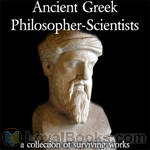 Ancient Greek Philosopher-Scientists
Ancient Greek Philosopher-Scientists
The Pre-Socratic Greek philosophers, that is, the philosopher-scientists who lived before or contemporaneously to Socrates, were the first men in the Western world to establish a line of inquiry regarding the natural phenomena that rejected the traditional religious explanations and searched for rational explanations. Even though they do not form a school of thought, they can be considered the fathers of philosophy and many other sciences as we have them now. None of their works is extant, so, in this collection, we present the textual fragments, when existing, of ten Pre-Socratic philosopher-scientists, and quotations and testimonials about them left by later authors... | |
By: Vaughan Kester (1869-1911) | |
|---|---|
 The Just And The Unjust
The Just And The Unjust
Framed for a murder he did not commit, John North must rely on his friends to help clear him of the charge. But, are they really his friends? Many have dirty little secrets they wish to keep private, even at the expense of John North’s life. Ironically, those keeping quiet include members of the legal profession. Only one drunken man knows the true identity of the killer but he has mysteriously disappeared. Deceit and betrayal flourish in this story, with a tense conclusion. (Introduction by Tom Weiss) | |
By: Vernon Lee (1856-1935) | |
|---|---|
 A Phantom Lover
A Phantom Lover
A Phantom Lover is a supernatural novella by Vernon Lee (pseudonym of Violet Paget) first published in 1886. Set in a Kentish manor house, the story concerns a portrait painter commissioned by a squire, William Oke, to produce portraits of him and his wife, the eccentric Mrs. Alice Oke, who bears a striking resemblance to a woman in a mysterious, seventeenth century painting. | |
By: Victor Appleton (1873-1962) | |
|---|---|
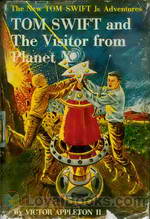 Tom Swift and the Visitor From Planet X
Tom Swift and the Visitor From Planet X
If you haven't come across the 200-book series about Tom Swift Jr, this book would be an interesting one to start with. The series is aimed at the young adult readership, probably male, and the young adolescent hero, Tom Swift Jr is the son of Tom Swift Sr. The books portray the perennially 18-year-old Tom, a tall and angular youngster, possessed of a very high intelligence and presence of mind. Regular characters include his parents, younger sister Sandy, best buddy Bud Barclay, his regular date Phyllis Newton, and the comic roly-poly Chow Winkler... | |
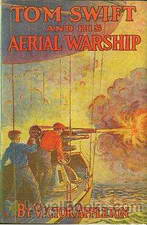 Tom Swift and His Aerial Warship, or, the Naval Terror of the Seas
Tom Swift and His Aerial Warship, or, the Naval Terror of the Seas
Tom Swift is an inventor, and these are his adventures. The locale is the little town of Shopton in upstateNew York, near Lake Carlopa. While some of Tom’s inventions are not well-founded in a scientific sense, others elaborated developments in the news and in popular magazines aimed at young science and invention enthusiasts. Presenting themselves as a forecast of future possibilities, they now and then hit close to the mark. Some predicted inventions that came true include “photo telephones”, vertical takeoff aircraft, aerial warships, giant cannons, and “wizard” cameras... | |
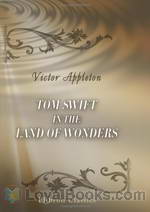 Tom Swift in the Land of Wonders
Tom Swift in the Land of Wonders
Tom Swift is the young protagonist in a series of juvenile adventure novels which began in the early twentieth century and continue to the present. Tom Swift is a genius inventor whose breakthroughs in technology (especially transport technology) drive the plots of the novels, placing them in a genre sometimes called “invention fiction” or “Edisonade”. This book is the 20th in the original series published from 1910 -1942, written by a ghost writer using the name of Victor Appleton. This adventure takes Tom and his cohorts to Honduras in search of a Mayan idol of gold. | |
 Tom Swift and His War Tank
Tom Swift and His War Tank
Tom Swift, that prolific youthful inventor, is engaged in trying to help the Allies win WWI. After reading newspaper accounts of the British tanks, Tom takes a sheet of paper and sets out to design a better one from scratch. And fortunately, he can throw the whole family business behind his venture. He has two problems: First, his friends and acquaintances are questioning his patriotism because he hasn’t enlisted as a rifleman for the front lines. Even his girl is worried his blood isn’t true-blue... | |
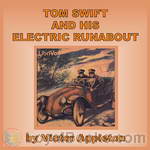 Tom Swift and his Electric Runabout
Tom Swift and his Electric Runabout
Tom Swift enters an upcoming race with his specially-designed prototype electric race car. But as he makes the final preparations and adjustments, days before the race, he discovers a plot that would bankrupt not only his family, but also everyone else that relies on the local bank (which is the target of a nefarious bank-run scheme). Tom must solve the mystery and stop the criminals behind the plot before he’ll test himself on a 500 mile race against some of the best electric cars and skilled drivers in the United States... | |
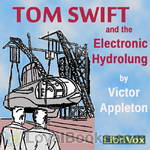 Tom Swift and the Electronic Hydrolung
Tom Swift and the Electronic Hydrolung
The US Government is very smartly letting Tom Swift Jr. handle the recovery of its probe to Jupiter. But a mystery missile suddenly intercepts the probe and splashes it in the South Atlantic.Faced with a huge search task to find the probe on the ocean bottom, Tom soon realizes that the same shadowy group that attacked the probe is competing to find it, and no holds are barred: kidnap, coercion, and lethal force are all in play.Under such circumstances, what can Tom do? What he does every time, of course! He invents some utterly cool device to get the job done! And his Electronic Hydrolung is just the beginning! | |
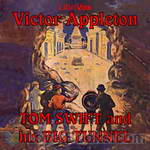 Tom Swift and His Big Tunnel
Tom Swift and His Big Tunnel
The Titus Brothers Contractors company have won a government contract in Peru to blast a tunnel through a mountain and connect two isolated railroad lines. The deadline is approaching, and the contractors have hit a literal wall: excessively hard rock which defies conventional blasting techniques. The company is under pressure to finish, or else the contract will default to their rivals, Blakeson & Grinder. Mr. Job Titus has heard of Tom Swift and Tom's giant cannon, which is used in protecting the Panama Canal, and wants to hire Tom to develop a special blasting powder to help them finish the excavation... | |
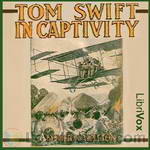 Tom Swift in Captivity
Tom Swift in Captivity
Tom Swift is approached by Mr. Preston, the owner of a circus, and begins to tell the story of Jake Poddington, Mr. Preston's most skilled hunter. As it turns out, Jake went missing just after sending word to Preston that Jake was on the trail of a tribe of giants, somewhere in South Africa. That was the last Preston has heard of Jake Poddington. Preston would like Tom to use one of his airships to search for Poddington, and if possible, bring back a giant for the circus.Listeners are forewarned that some elements and characters included in Tom Swift books portray certain ethnic groups in a very dated manner that modern readers, and listeners, may find offensive... | |
 Tom Swift and his Airship
Tom Swift and his Airship
In Tom Swift and His Airship, Tom Swift has finished his latest invention- the Red Cloud, a fast and innovative airship. Tom is anxious for a cross-country trial, but just before he and his friends take off, the Shopton bank is robbed. No sooner is Tom in the air than he is blamed for the robbery. Suddenly, he's a wanted fugitive but doesn't know why until he's half-way across the country. With no safe harbor or friend on the land below, Tom must race back to Shopton to clear his name before he's shot out of the sky. | |
 Tom Swift Among the Diamond Makers
Tom Swift Among the Diamond Makers
Tom Swift flies his airship to the mountain tops of Colorado to seek for the secret of the Diamond Makers: criminal scientists who have figured out the formula of manufacturing a limitless fortune in diamonds. But these rogues will stop at nothing to keep their secret. Tom & friends are soon captured and left to die in a collapsing mountain. | |
 Tom Swift and His Wireless Message
Tom Swift and His Wireless Message
Tom Swift & friends decide to trial an experimental airship near the New Jersey coast, and are unexpectedly swept out to sea by hurricane winds. Unable to steer or navigate without tearing the airship apart, the hapless crew must simply let the storm take them wherever it will. Unfortunately, the storm proves too much for the craft and Tom makes a crash landing on the uninhabited and crumbling Earthquake Island. | |
 Tom Swift and His Sky Racer
Tom Swift and His Sky Racer
A $10,000 prize lures Tom into competing at a local aviation meet at Eagle Park. Tom is determined to build the fastest plane around, but his plans mysteriously disappear, which means Tom must redesign his new airplane from the beginning. | |
By: Victor G. Durham (1862?-1925?) | |
|---|---|
 Submarine Boys and the Middies
Submarine Boys and the Middies
The Pollard is about to be taken to Anapolis, where the United States Navy will train their midshipmen how to run the submarine. Jack, Hal and Eph are all to help with training and to see the sights in Anapolis. They might even persuade the Navy to buy the second submarine, the Farnum. (Ann Boulais) | |
 Submarine Boys on Duty
Submarine Boys on Duty
Jack Benson and Hal Hastings arrive in Dunhaven, looking for adventure. But in a sleepy, little town, they might not find much. When they find out that there is a submarine in the shipyard, they decide that this is what they have been looking for. | |
 Submarine Boys' Trial Trip
Submarine Boys' Trial Trip
The torpedo submarine's inventor, Jack Farnum, is looking for investors to help him kick his new shipyard into high gear. He already has his crew set, with sixteen year old Jack Benson as the captain, and his friend Hal Hastings running the engines. But, there may be some changes to the crew of the Pollard on the horizon. | |
 Submarine Boys' Lightning Cruise
Submarine Boys' Lightning Cruise
Captain Jack Benson and Hal Hastings have been sailing in torpedo submarines a while now. But, there is new danger that they will have to get used to, having the actual torpedoes onboard! They will be trying out a new boat, named after Hal, with the Navy watching closely. But trouble is always close by. (Ann Boulais) | |
 Submarine Boys and the Spies
Submarine Boys and the Spies
It is a wonderful December day in Spruce Beach, FL, and everyone is waiting, waiting for something special that has been promised. The "Benson", the fast submarine built by the Pollard Submarine Boat Company, is set to arrive. But, there are more people who are interested in the "Benson" than those picnicking on the beach. Who could they be? (Ann Boulais) | |
By: Victor Hugo (1802-1885) | |
|---|---|
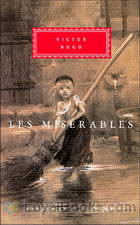 Les Misérables
Les Misérables
Victor Hugo's Les Misérables is a novel which tells the story of ex-convict Jean Valjean, his struggles and eventual redemption. It's hailed by many critics as not just Victor Hugo's finest work but also one of the best French novels of all time. Like most epic novels written in the 19th century, the storyline of Les Misérables spans through several decades beginning in the early 1800s and culminating in the 1832 June Rebellion in Paris. The events related to the lives of the central characters in the novel are also tied to the great historical events of the time from the French Revolution to the June Rebellion... | |
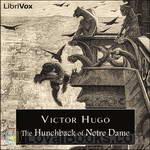 The Hunchback of Notre Dame
The Hunchback of Notre Dame
One of the great literary tragedies of all time, The Hunchback of Notre Dame features some of the most well-known characters in all of fiction - Quasimodo, the hideously deformed bellringer of Notre-Dame de Paris, his master the evil priest Claude Frollo, and Esmeralda, the beautiful gypsy condemned for a crime she did not commit. | |
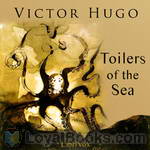 Toilers of the Sea
Toilers of the Sea
This is the story of a man’s monumental struggle against nature, to win the hand of the woman he loves, and surmount every difficulty that Nature puts in his path | |
 The Man Who Laughs
The Man Who Laughs
The Man Who Laughs is a novel by Victor Hugo, originally published in April 1869 under the French title L'Homme qui rit. Also published under the title "By Order of the King". (Introduction by Wikipedia) | |
 The Last Day of a Condemned
The Last Day of a Condemned
A man who has been condemned to death writes down his cogitations, feelings and fears while he is waiting for his execution. He does not betray his name to the reader or what he has done. He describes his life in prison, everything from what his cell looks like to the personality of the prison priest. (Introduction by Wikipedia) | |
 Hans of Iceland
Hans of Iceland
Hans of Iceland was written in 1821 and is the very first novel written by young Victor, years before he became the great Hugo. It has all the ingredients of a gothic novel: dreadful murders by the hand of a human monster, a young hero in love with the destitute heroine, royal court-intrigues and rebellious uprising, all set in dungeons, dark towers and the untamed nature of Norway.This audio-book has been recorded as Dramatic Reading with all the voices performed by one single reader, including laughs, sobs, groans, occasional screams and a lot of growls. I hope you will enjoy listening to this adventurous journey just as much as I enjoyed recording it. - Summary by Sonia | |
By: Violet Hunt (1862-1942) | |
|---|---|
 Last Ditch
Last Ditch
An amusing but deeply poignant story, “The Last Ditch” describes the wartime experiences of a British aristocratic family who gradually realize that their old feudal perquisites are passing away in the trenches of the Great War and that unprecedented new forces are pushing out the comfortable old ways. Lady Arles is the matriarch determined to resist to her last breath. Her bohemian young daughter Venice is set on a career as a poet and even dallies with a Socialist lover, but in some ways is the family member who seems the most helpless without her old aristocratic privileges... | |
By: Virginia Woolf (1882-1941) | |
|---|---|
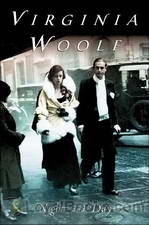 Night and Day
Night and Day
Virginia Woolf is one of the most influential and controversial feminine figures in the literary life of the London society. Night and Day is one of her first novels published in 1919 which displays the moral and spiritual issues that people confront. The author herself was an emotionally unstable person, her episodes of mental illness and suicidal depression being recurrent and always brought into the public attention. The novel revolves around the life of the main character, Katherine Hilbery, a superb girl, free spirited and living in her twenties... | |
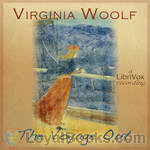 The Voyage Out
The Voyage Out
The Voyage Out is the first novel by Virginia Woolf, published in 1915 by Duckworth; and published in the U.S. in 1920 by Doran. One of Woolf's wittiest social satires.Rachel Vinrace embarks for South America on her father's ship and is launched on a course of self-discovery in a kind of modern mythical voyage. The mismatched jumble of passengers provide Woolf with an opportunity to satirize Edwardian life. The novel introduces Clarissa Dalloway, the central character of Woolf's later novel, Mrs... | |
 Jacob's Room
Jacob's Room
The novel centers, in a very ambiguous way, around the life story of the protagonist Jacob Flanders, and is presented entirely by the impressions other characters have of Jacob [except for those times when we do indeed get Jacob's perspective]. Thus, although it could be said that the book is primarily a character study and has little in the way of plot or background, the narrative is constructed as a void in place of the central character, if indeed the novel can be said to have a 'protagonist' in conventional terms. Motifs of emptiness and absence haunt the novel and establish its elegiac feel. | |
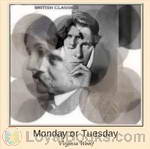 Monday or Tuesday
Monday or Tuesday
Adeline Virginia Woolf was an English author, essayist, publisher, and writer of short stories, regarded as one of the foremost modernist literary figures of the twentieth century. During the interwar period, Woolf was a significant figure in London literary society and a member of the Bloomsbury Group. Her most famous works include the novels Mrs. Dalloway (1925), To the Lighthouse (1927), and Orlando (1928), and the book-length essay A Room of One's Own (1929), with its famous dictum, "A woman must have money and a room of her own if she is to write fiction... | |
By: Vladimir Korolenko (1853-1921) | |
|---|---|
 Blind Musician
Blind Musician
In this sketch, called by Korolenko “a psychological study,” the author has attempted to analyze the inner life of the blind. He has undertaken to lay before the reader not only the psychological processes in the mind of the blind, but their suffering from the lack of sight as well, uncomplicated by any untoward circumstances. To accomplish this he has placed his hero in most favorable, nay, almost exceptional conditions. The subjects for this study are a blind girl, whom the author had known as a child; a boy, a pupil of his, who was gradually losing his sight; and a professional musician, blind from his birth, intellectually gifted, scholarly, and refined. | |
By: Voltaire (1694-1778) | |
|---|---|
 Zadig, or the Book of Fate
Zadig, or the Book of Fate
Zadig, ou La Destinée, (”Zadig, or The Book of Fate”) (1747) is a famous novel written by the French Enlightenment philosopher Voltaire. It tells the story of Zadig, a philosopher in ancient Babylonia. The author does not attempt any historical accuracy, and some of the problems Zadig faces are thinly disguised references to social and political problems of Voltaire’s own day. The book is philosophical in nature, and presents human life as in the hands of a destiny beyond human control. It is a story of religious and metaphysical orthodoxy, both of which Voltaire challenges with his presentation of the moral revolution taking place in Zadig himself... | |
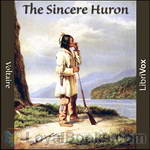 The Sincere Huron
The Sincere Huron
L’Ingénu is a satirical novella by the French writer Voltaire, published in 1767. It tells the story of a Huron Indian transported to the sophistication of eighteenth century Paris, and satirizes religious doctrine, as well as the folly and injustices of French society. | |
By: W. F. Harvey (1885-1937) | |
|---|---|
 Beast With Five Fingers
Beast With Five Fingers
A well off English bachelor receives a legacy from his uncle. This includes the uncle's very large library and a box containing something that used to belong to his uncle. The box has air holes in it. It is not a rat or other small mammal for his collection, but it is something still alive; something very malevolent and something very evil. | |
By: W. M. Flinders Petrie | |
|---|---|
 Egyptian Tales, translated from the Papyri, Series One
Egyptian Tales, translated from the Papyri, Series One
Brief, and in some cases incomplete, stories of magic from ancient Egypt. | |
By: W. S. Gilbert (1836-1911) | |
|---|---|
 The Bab Ballads
The Bab Ballads
The Bab Ballads are a collection of light verse by W. S. Gilbert, illustrated with his own comic drawings. Gilbert wrote the Ballads before he became famous for his comic opera librettos with Arthur Sullivan. In writing the Bab Ballads, Gilbert developed his unique “topsy-turvy” style, where the humour was derived by setting up a ridiculous premise and working out its logical consequences, however absurd. The Ballads also reveal Gilbert’s cynical and satirical approach to humour. They became famous on their own, as well as being a source for plot elements, characters and songs that Gilbert would recycle in the Gilbert and Sullivan operas... | |
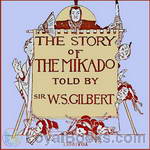 The Story of the Mikado
The Story of the Mikado
The Mikado is the ninth of the 14 Gilbert and Sullivan musical collaborations. It opened in 1885, had the second longest run for any work of musical theatre of the time, and remains the most frequently performed Gilbert and Sullivan. It was adapted as a children's book by W. S. Gilbert entitled The Story of The Mikado, which was Gilbert's last literary work (and published posthumously). It is a retelling of The Mikado, with various changes to simplify language or make it more suitable for children... | |
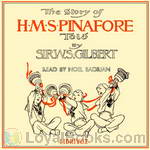 The Story of the H.M.S. Pinafore
The Story of the H.M.S. Pinafore
H.M.S. Pinafore; or, The Lass That Loved a Sailor, is a comic opera in two acts, with music by Arthur Sullivan and a libretto by W. S. Gilbert. It opened in London, England, on 25 May 1878 and ran for 571 performances, which was the second-longest run of any musical theatre piece up to that time. H.M.S. Pinafore was Gilbert and Sullivan's fourth operatic collaboration and their first international sensation. This is not that opera.It was adapted as a children's book by W. S. Gilbert entitled The Story of HMS Pinafore, or The Pinafore Picture Book, and includes some lovely illustrations by Alice B... | |
By: W. Somerset Maugham (1874-1965) | |
|---|---|
 The Magician
The Magician
The Magician is a novel by British author W. Somerset Maugham, originally published in 1908. In this tale, the magician Oliver Haddo, a caricature of Aleister Crowley, attempts to create life. Crowley wrote a critique of this book under the pen name Oliver Haddo, where he accused Maugham of plagiarism. Maugham wrote The Magician in London, after he had spent some time living in Paris, where he met Aleister Crowley. The novel was later republished with a foreword by Maugham entitled A Fragment of Autobiography. (Wikipedia) | |
 Painted Veil
Painted Veil
This Maugham classic is set in England and Hong Kong and in a cholera --ridden Chinese village in the 1920's. A committed, principled, epidemiologist, Dr. Fane, falls in love with the beautiful, but vain and foolish, Kitty Garstin. She agrees to marry him only because she wishes to beat her sister to the altar. She soon commits adultery with a British official in Hong Kong, where they have relocated. Dr. Fane decides that she must accompany him to a small village, deep within China, where cholera is rampant; otherwise, he will reveal the betrayal, with grave consequences for all... | |
 Mrs. Craddock
Mrs. Craddock
“I thought it was you I saw coming up the hill,” she said, stretching out her hand. He stopped and shook it; the touch of his big, firm fingers made her tremble. His hand was massive and hard as if it were hewn of stone. She looked up at him and smiled. “Isn’t it cold?” she said. It is terrible to be desirous of saying all sorts of passionate things, while convention debars you from any but the most commonplace. (Excerpts from chapter 1.) | |
 Bishop's Apron
Bishop's Apron
"Canon Spratte saw himself as he thought others might see him: mediocre, pompous, self-assertive, verbose." Maugham could have added ambitious, hypocritical, and vain. In this engrossing social satire, Theodore Spratte, a cleric, motivated by an obsessive desire to be elevated to bishop, embellishes his family history and intrudes upon his son's and daughter's courtships. A reviewer in 1906 wrote, "The whole book is an admirable blend of cynical gaiety and broadly farcical comedy; it is the smartest and most genuinely humorous novel that the season has yet given us." -- Lee Smalley | |
By: W. W. Jacobs (1863-1943) | |
|---|---|
 The Monkey's Paw
The Monkey's Paw
An eerie supernatural story, The Monkey's Paw follows the White family as they come to realize that nothing in life comes without a price or at the simple push of a button. First published in 1902, the short story powerfully suggests that one should not interfere with the course of nature, as cheating fate can result in unforeseen consequences that leave one with more than they bargained for. Set in England, the tale opens on a dark and stormy night inside Laburnam Villa, home to Mr. and Mrs... | |
By: Wadsworth Camp (1879-1936) | |
|---|---|
 The Abandoned Room
The Abandoned Room
An enthralling locked room mystery, The Abandoned Room focuses on the mysterious circumstances under which Silas Blackburn has been murdered at The Cedars, an eerie and isolated country estate. The most obvious suspect to the murder is Bobby Blackburn, the victim’s grandson who seems to have the best motive for the murder, although he has no recollection of the fateful night. Furthermore, Camp integrates a vibrant array of characters, detailed description, supernatural occurrences, and a generous supply of suspense, which in turn build up the novel’s allure... | |
By: Waldemar Bonsels (1880-1952) | |
|---|---|
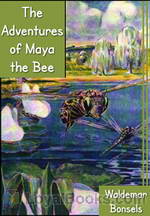 The Adventures of Maya the Bee
The Adventures of Maya the Bee
A little bee is born in a large and busy hive. At that time, the hive is going through a period of unrest and there are fears that it will become subdivided into separate colonies. The little new-born, Maya, is under the care of a strict but loving teacher. One day, driven by curiosity and rebellion, Maya escapes from the safe environs of the hive and flies into the forest. Here, she encounters all sorts of interesting, exciting, frightening and funny things. The Adventures of Maya the Bee is the story of the intriguing days that follow... | |
By: Walt Whitman (1819-1892) | |
|---|---|
 The Wound Dresser
The Wound Dresser
The Wound Dresser is a series of letters written from the hospitals in Washington by Walt Whitman during the War of the Rebellion to The New York Times, the Brooklyn Eagle and his mother, edited by Richard Maurice Burke, M.D., one of Whitman's literary executors. | |
 Life and Adventures of Jack Engle: An AutoBiography
Life and Adventures of Jack Engle: An AutoBiography
This story ran as a serial in 1852 in the New York Sunday Dispatch, and for more than 160 years was buried in obscurity, unknown to the world as novel written by Walt Whitman. Zachary Turpin, a graduate student specializing in Whitman's works, had seen in his notes a sketch of a novel including the characters Covert, Wigglesworth, Smytthe and Jack Engle, but no work including these characters had ever been found. After poring over endless pages of newspapers of the era however, Turpin found this advertisement for an upcoming serial: “A RICH REVELATION... | |
By: Walter Crane (1845-1915) | |
|---|---|
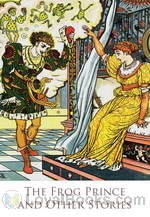 The Frog Prince and Other Stories
The Frog Prince and Other Stories
The three charming stories contained in The Frog Prince and Other Tales include a less-known fairy-tale called Princess Belle-Etoile besides the title story and Alladin and the Wonderful Lamp. Published in 1874, the tales are re-told by the famous illustrator Walter Crane, who has also provided some of the most lovely illustrations in the book. The book makes an ideal gift and both parents and children will certainly enjoy it. It's perfect for bedtime story-reading sessions and kids would love gazing at the beautiful Greek-style illustrations that are scattered throughout the book... | |
By: Walter De la Mare (1873-1956) | |
|---|---|
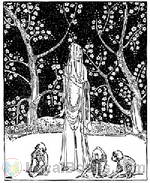 The Three Mulla-mulgars
The Three Mulla-mulgars
Three monkey brothers, Thumb, Thimble, and Nod, are Mulla-mulgars or royal monkeys. As she dies, their mother gives them the enchanted Wonderstone for protection, and tells them to follow their father. They embark on a journey of fantastical adventure to find their father, who left years earlier in search of the kingdom of his brother, the Prince of the Valleys of Tishnar, promising to return for them after he had found the way. | |
 Return (de la Mare version)
Return (de la Mare version)
A story of psychological horror, The Return explores ideas of identity, love, and alienation. Arthur grapples with the reactions of his family and community, and his own sanity, when he experiences a sudden and mysterious "transformation". ( | |
 Peacock Pie: A Book of Rhymes
Peacock Pie: A Book of Rhymes
These wonderful, whimsical poems from the incomparable Walter de la Mare describe the bliss of childhood, explore the marvel of a child's imagination and portray the intriguing landscapes of existences both lived and imagined by a young mind in a magical kingdom located somewhere between daydream and caprice. In these poems we experience aspects of a reality unencumbered by concern, unhindered by anxiety, and share an imagination free to wander, ponder, contemplate, envision and express itself in a marvelous mosaic of impression, inspiration and introspection... | |
 Crossings: A Fairy Play
Crossings: A Fairy Play
Under the terms of a will, the Wildersham children have to relocate from the family house in the city to "Crossings" in the country, and to spend the first fortnight alone fending for themselves in the house. The children encounter interesting country neighbors, including ghosts and fairies. Or are they dreaming? Walter De La Mare was a poet, and we have a number of his poems available at. This is his only play: "Crossings was produced for the first time in 1919, at the Wick School, Hove, to celebrate the coming of Peace... | |
By: Walter Pater (1839-1896) | |
|---|---|
 Marius the Epicurean
Marius the Epicurean
Marius the Epicurean is a philosophical novel written by Walter Pater, published in 1885. In it Pater displays, with fullness and elaboration, his ideal of the aesthetic life, his cult of beauty as opposed to bare asceticism, and his theory of the stimulating effect of the pursuit of beauty as an ideal of its own. The principles of what would be known as the Aesthetic movement were partly traceable to this book; and its impact was particularly felt on one of the movement’s leading proponents, Oscar Wilde, a former student of Pater at Oxford. | |
 Appreciations, with an Essay on Style
Appreciations, with an Essay on Style
Appreciations, with an Essay on Style, is a collection of Walter Pater's previously-published essays on literature. The collection was well received by public and critic since its first edition, in 1889. The volume includes an appraisal of the poems of Dante Gabriel Rossetti, first printed in 1883, a few months after Rossetti's death; an essay on Thomas Browne, whose Baroque style Pater admired; and a discussion of Measure for Measure, one of Pater's most often reprinted pieces. The second edition, published in 1890, had a few modifications, and is the basis for all other editions of the book. | |
By: Walter W. Bryant (1865-1923) | |
|---|---|
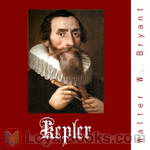 Kepler
Kepler
This biography of Johannes Kepler begins with an account of what the world of astronomy was like before his time, then proceeds to a look at his early years. Two chapters deal with his working relationship with Tycho Brahe. These are followed by a look at Kepler's laws and his last years. | |
By: Ward Moore (1903-1978) | |
|---|---|
 Greener Than You Think
Greener Than You Think
Do remember reading a panic-mongering news story a while back about genetically engineered “Frankengrass” “escaping” from the golf course where it had been planted? That news story was foreshadowed decades previously in the form of prophetic fiction wherein a pushy salesman, a cash-strapped scientist, and a clump of crabgrass accidentally merge forces with apocalyptic consequences. A triple-genre combo of science fiction, horror, and satire, Greener Than You Think is a forgotten classic that resonates beautifully with modern times. This is a faithful reading of a 1947 first edition text. | |
By: Warner Van Lorne | |
|---|---|
 Wanted – 7 Fearless Engineers!
Wanted – 7 Fearless Engineers!
A great civilization’s fate lay in Dick Barrow’s hands as he led his courageous fellow engineers into a strange and unknown land. None of them knew what lay ahead–what dangers awaited them–or what rewards. But they did not hesitate because the first question asked them had been: “Are you a brave man?” | |
By: Washington Irving (1783-1859) | |
|---|---|
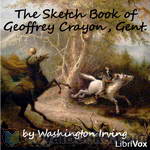 The Sketch Book of Geoffrey Crayon, Gent.
The Sketch Book of Geoffrey Crayon, Gent.
Apart from "Rip Van Winkle" and "The Legend of Sleepy Hollow" - the pieces which made both Irving and The Sketch Book famous - other tales include "Roscoe", "The Broken Heart", "The Art of Book-making", "A Royal Poet", "The Spectre Bridegroom", "Westminster Abbey", "Little Britain", and "John Bull". His stories were highly influenced by German folktales, with "The Legend of Sleepy Hollow" being inspired by a folktale recorded by Karl Musaus. Stories range from the maudlin (such as "The Wife" and... | |
 The Alhambra: A Series of Tales and Sketches of the Moors and Spaniards
The Alhambra: A Series of Tales and Sketches of the Moors and Spaniards
This is a collection of essays, verbal sketches, and stories by Washington Irving. Irving lived at the Alhambra Palace while writing some of the material for his book. In 1828, Washington Irving traveled from Madrid, where he had been staying, to Granada, Spain. At first sight, he described it as "a most picturesque and beautiful city, situated in one of the loveliest landscapes that I have ever seen." He immediately asked the then-governor of the historic Alhambra Palace as well as the archbishop of Granada for access to the palace, which was granted because of Irving's celebrity status... | |
 Letters of Jonathan Oldstyle, Gent.
Letters of Jonathan Oldstyle, Gent.
The Letters of Jonathan Oldstyle, Gent. (1824) is a compilation of eight humorous and observational letters written by American writer, Washington Irving, under the pseudonym, Jonathan Oldstyle. These eight letters and one additional were first published as a series of "Letters to the Editor" of the New York paper, The Morning Chronicle, between 1802 and 1803. In them Oldstyle skewered the local New York social scene on the topics of etiquette, marriage, fashion, and other particulars of human interaction... | |
By: Wilbur Fisk Gordy | |
|---|---|
 Stories of Later American History
Stories of Later American History
STORIES OF LATER AMERICAN HISTORYBy WILBUR F. GORDYPREFACEThis book, like Stories of Early American History, follows somewhat closely the course of study prepared by the Committee of Eight, the present volume covering the topics outlined for Grade V, while the earlier one includes the material suggested for Grade IV. It was the plan of that committee to take up in these grades, largely in a biographical way, a great part of the essential facts of American history; and with this plan the author, who was a member of that committee, was in hearty accord... | |
By: Wilkie Collins (1824-1889) | |
|---|---|
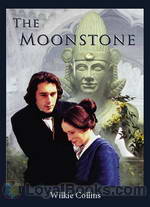 The Moonstone
The Moonstone
A young woman who inherits a beautiful diamond known as The Moonstone on her eighteenth birthday becomes the center of this mystery story. The diamond is a gift from an uncle who once served as an army officer in British India. She proudly wears the jewel on her dress at her birthday party that night. The precious stone has a dark and sinister history, which will have a terrible impact on her life and the lives of those around her. You're about to read what's been termed the very first real detective story in the English language... | |
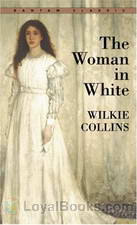 The Woman in White
The Woman in White
Wilkie Collins’s The Woman in White tells the story of two half-sisters, Laura Fairlie and Marian Halcombe who were embroiled in the sinister plot of Sir Percival Glyde and Count Fosco to take over their family’s wealth. It’s considered to be one of the first “sensation novels” to be published. Like most novels that fall into this category, the protagonists here are pushed to their limits by the villains before they finally got the justice they deserved. The story begins with Walter Hartright helping a woman dressed in white who turned out to have escaped from a mental asylum... | |
 The Haunted Hotel, A Mystery of Modern Venice
The Haunted Hotel, A Mystery of Modern Venice
A kind, good-hearted genteel young woman jilted, a suspicious death or two that only a few think could be murder, strange apparitions appearing in an hotel all combine to create a horrifying conundrum. Who was the culprit and will finding out finally put an end to the mystery? | |
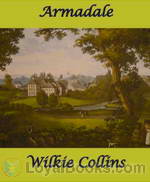 Armadale
Armadale
The novel has a convoluted plot about two distant cousins both named Allan Armadale. The father of one had murdered the father of the other (the two fathers are also named Allan Armadale). The story starts with a deathbed confession by the murderer in the form of a letter to be given to his baby son when he grows up. Many years are skipped over. The son, mistreated at home, runs away from his mother and stepfather, and takes up a wandering life under the assumed name of Ozias Midwinter.” | |
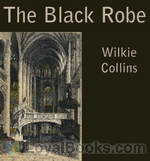 The Black Robe
The Black Robe
The church has lost out on a valuable piece of land through wars and transfers. Father Benwell is determined to reclaim that property by the conversion of the owner, Lewis Romayne. Enter beautiful Stella, who captures the heart of Romayne. Should Stella capture the love and devotion of Romayne, Father Benwell's scheme would fail, and that is something that he can not allow. Complicating things is the fact that both Romayne and Stella are hiding their own terrible secrets.The Black Robe is an 1881 epistolary novel by famed English writer, Wilkie Collins. The book centers around the misadventures of Lewis Romayne, and is also noted for a perceived anti-Catholic bias | |
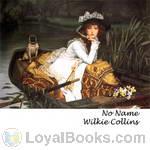 No Name
No Name
The story begins in 1846, at Combe-Raven in West Somersetshire, the country residence of the happy Vanstone family. When Andrew Vanstone is killed suddenly in an accident and his wife follows shortly thereafter, it is revealed that they were not married at the time of their daughters' births, making their daughters "Nobody's Children" in the eyes of English law and robbing them of their inheritance. Andrew Vanstone's elder brother Michael gleefully takes possession of his brother's fortune, leaving his nieces to make their own way in the world... | |
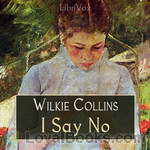 I Say No
I Say No
Emily Brown is an orphan girl that almost no one can help but love when they meet her. She is pursued by two worthy men: Mr. Alban Morris, the drawing master at her school; and Rev. Miles Mirabel, a clergyman. However, one of them is lying to her after she discovers that her father's death wasn't natural, as she was led to believe. (Introduction by TriciaG) | |
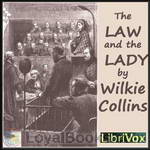 The Law and the Lady
The Law and the Lady
Valeria Brinton marries Eustace Woodville despite objections from Woodville's family leading to disquiet for Valeria's own family and friends.Just a few days after the wedding, various incidents lead Valeria to suspect her husband is hiding a dark secret in his past and she discovers that he has been using a false name. He refuses to discuss it leading them to curtail their honeymoon and return to London where Valeria learns that he was on trial for his first wife's murder by arsenic. He was tried in a Scottish court and the verdict was 'Not Proven' rather than 'not guilty' implying his guilt but without enough proof for a jury to convict him... | |
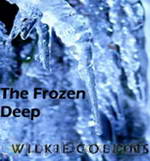 The Frozen Deep
The Frozen Deep
The Frozen Deep is a story of a love triangle between Clara, Frank and Richard, spiced up with dangerous expeditions, mysterious visions and life-threatening circumstances. The end is as surprising and unexpected as we are (or are not) accustomed to in Collins' books. | |
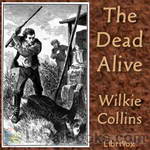 The Dead Alive
The Dead Alive
Ill feelings exist between the Meadowcroft sons and John Jago, the foreman of the Meadowcroft estate. Then, John Jago disappears, and a body is found in a kiln. The Meadowcroft brothers stand accused of the crime, but are they guilty? The Dead Alive is a novel written by Wilkie Collins based on the true-life Boorn Brothers murder conviction case of 1819. Jesse and Stephen Boorn were sentenced to death for the murder of their brother-in-law, but were they wrongly convicted? | |
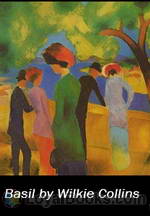 Basil
Basil
Basil, son of a father who values the family pedigree and who would not let him marry below his station, falls in love at first sight with a girl he sees on a bus. He stalks her and discovers she is Margaret Sherwin, only daughter of a linen draper. He stalks her and persuades her father to let him marry her secretly. He agrees on the condition, that, as his daughter is only seventeen, they live apart for the first year. At first the secret works, but then the mysterious Mannion, whose emotions cannot be read in his face, returns from abroad. On the last night of the year Basil follows Margaret and Mannion and discovers them in flagrante delicto. (Wikipedia) | |
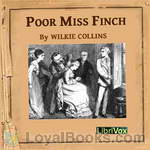 Poor Miss Finch
Poor Miss Finch
"Poor Miss Finch." That is what everyone calls the courageous protagonist of this book. In other words, "poor thing, she's blind, isn't it awful?" Ha! Lucilla Finch is the wisest of all the characters, in spite of, and perhaps because of, her blindness. This story is about her trials, tribulations and triumphs. She reminds me of myself. Not the falling recklessly in love and being pulled this way and that by foolish young men and mad old doctors. I mean that, like her, I'm blind and proud of it! (Introduction by Sandra G) | |
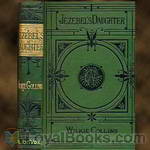 Jezebel's Daughter
Jezebel's Daughter
A brilliant chemist and a shrewd businessman — die on the same day. The widow of the chemist, Mrs. Fontaine, is left with the poisons he was researching , while Mrs. Wagner is left with her husband's mental health institution reforms and his plans for hiring women along with men in his firm's offices. Mrs. Wagner believes in treating madmen gently, and requests for the funny little man Jack Straw to be released from the madhouse. At the same time, her nephew David Glenney is sent to the Frankfurt office, where he works with Mr Engelmann and Mr Keller... | |
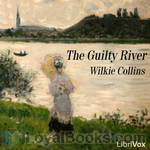 The Guilty River
The Guilty River
After his father’s death Gerard Roylake returns from Germany to take up his inheritance at Trimley Deen. On one evening he meets his childhood friend, Cristel Toller. They fall in love, but there is a crux. A deaf man, called The Lodger is obsessed with Cristel. He invites Gerard to tea with evil intentions… and Gerard accepts the invitation.The book is written in the first person and tells the story from Gerard's point of view. | |
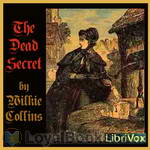 The Dead Secret
The Dead Secret
"Everything in life has a price. May be, telling a Secret has the highest. However, not telling may be worse. What will Sarah choose? will she tell the Secret which destroyed her life?" | |